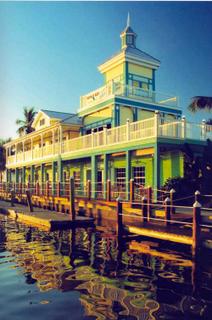Mapping The Ambush
Raw provided a video, and this prompted some questions.
Raw has the Video: [ http://tinyurl.com/lese2 ]
ABC: Blotter.
It would be interesting to get a follow-up from the driver who provided the video. Specifically:
1. Are the timelines in the Army response consistent with his recollections?
2. Do the UAV images match the description of the Army account?
3. The Army reports a Medevac; how does this medevac arrival time square with what was in the UAV image;
4. The Army reports RPGs; how does this account square with audio recordings, the driver's recollections, and the UAV images -- are there explosions which match this account;
5. The army reports that there was a perimeter established; how does this account square with the UAV images; if there was a perimeter, where was it established, how did the perimeter relate to the physical location of the two trucks in the image; do the distances that the UAV depicted square with the size, dimensions, and other timelines the Army provided.
6. Army reports attack aviation. Does the driver recall any aviation overhead, what sounds did he hear; does he recall any jets.
7. Which direction were the aviation crews traveling, where were they assigned; and if they had a direct over flight, how far from the trucks would the aircrew have to be to be out of audio-visual range of the driver.
8. it’s unclear what happened after the video was shot. How did the driver who provided the video get out of the area; was he rescued later; or was there something else that happened?
POINT
If you physically map out the times, where each truck was located, then retrace the army-version of events, you'll get a sense of whether the timelines are realistic.
Based on the driver's public comments, it's not clear that anyone in the army ever rescued him.
How long was he in the truck?
How did he get out?
Did he walk out on his own, and never saw anyone?
Which direction did he travel?
Point: He's alive today and can give some idea what he did or did not hear. The job the army is to first explain how all this rescue effort occurred, but the driver reports there was nothing going on.
Something isn't adding up: It doesn't seem as though the Army's story stands up to what the driver is reporting. It's possible the Army has deliberately oversold what did or didn’t' happen, to make it appear as though they did something. They may define the rescue to be something that was so far away, that it was not connected the original event. I'm assuming the army's going to craft a story that will explain away everything; the problem the Army appears to have is they don't know specifics on what the driver did or didn't see while exiting. It's possible the Army never released the driver had a video until after they did the initial review; and the original reports may have been changed to match what was in the released-driver video.
The key will be to find out the first story the Army went with; then find out if there were changes. The original investigation was based on something. They key is to find the information that triggered the original report, and explore how the initial Army version-story does or does not square with the final Army account below.
I believe the Army less. Military has lied about events to cover-up failures, war crimes. [See This: Haditha, Court martials, settlement with member of Congress]
1. The driver contents there was no rescue;
2. The army says there was.
Army Statement, as reported by ABC:
"There was an investigation conducted immediately following the attack that was concluded about a month after the attack. The investigation documents the actions of individuals prior to and during the convoy, and following the attack until the quick reaction force (QRF) arrived. The investigation documented that the individuals at the front of the convoy reacted as they were taught by pushing forward and getting out of the kill zone of the ambush. What is not visible in the video being shown is that they collected the casualties they could reach and laid down suppressive fire with their weapons to help get those vehicles that could move from the front of the convoy out of the kill zone. Once they were out of the kill zone, they set up security, called for the QRF, called for close air support, called a medevac for the casualties, and directed the movements of other gun trucks further back in the convoy. They helped direct two gun trucks, as well as a recovery vehicle, to maneuver up to two of the KBR vehicles that had wounded civilians in them and extract them. They were able to retrieve the wounded civilians from their vehicles while under enemy fire. During the entire time, the convoy was attacked with a heavy volume of small arms fire, rocket propelled grenades and hand grenades. Attack aviation arrived on scene approximately 20 minutes after the start of the attack. The ground QRF arrived on scene approximately 30-35 minutes after the start of the attack. The actions of the unit saved numerous lives during this attack. The investigation actually recognized the valorous actions of one Soldier and one civilian and recommended they be submitted for awards commensurate with their actions. At no time did any individuals abandon the convoy. They fought back bravely while waiting for reinforcements and attending to the casualties. We grieve the loss of any life, and what happened that day was tragic. But the events had the potential to be even more tragic, with an even greater loss of life, if not for the actions of members of that unit."



<< Home